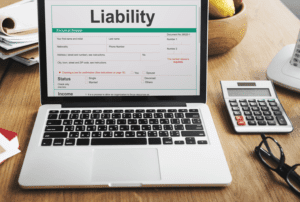
Before technological advances came along for these growing businesses, bookkeepers were forced to manually manage their accounting (when single-entry accounting was the norm). Of course, this lead to the chance of human error, which is detrimental What is bookkeeping to a company’s health, balance sheets, and investor ability. In fact, most businesses don’t rely on single-entry accounting because they need more than what single-entry can provide. Single-entry accounting only shows expenses and sales but doesn’t establish how those transactions work together to determine profitability. While single-entry accounting can help you kickstart your bookkeeping knowledge, it’s a dated process that many other business owners, investors, and banks won’t rely on. That’s why you’re better off starting with double-entry bookkeeping, even if you don’t do much reporting beyond a standard profit and loss statement.
Best Ways to Identify Business Transactions With PDF

That usually indicates a mistake—like a missed or misclassified transaction—and requires reconciliation. Doesn’t Reflect Market ValueAssets are recorded at book value, not fair market value. For example, real estate may appreciate, but that’s not shown on the balance sheet. This arrangement can be ideal for sole proprietorships (usually unincorporated businesses owned by one person) in which there is no legal distinction between the owner and the business.
Known Limitations of the Formula
- Assets represent the resources a business owns, liabilities indicate what the business owes, and equity reflects the ownership interest in the company.
- That’s why you’re better off starting with double-entry bookkeeping, even if you don’t do much reporting beyond a standard profit and loss statement.
- It can be defined as the total number of dollars that a company would have left if it liquidated all its assets and paid off all of its liabilities.
- As businesses grow, the basic accounting equation can be expanded to include revenues and expenses, reflecting the company’s performance over time.
- The accounting equation is also known as the basic accounting equation or the balance sheet equation.
- The accounting equation is more than just a formula; it is the cornerstone of the double-entry accounting system and financial reporting.
For example, if one asset increases by $5,000, it’s possible that another asset will decrease by $3,000, and liabilities will increase by $2,000 simultaneously. So, in this article, we’ll learn about the accounting equation, including its definition, example, application, elements, effects on transactions, and other details. Technology, especially accounting software, automates tasks, reduces errors, and provides better financial insights, making accounting more efficient and accurate. Understanding how to apply the accounting equation in real-life scenarios is essential for managing business finances effectively.
Purchasing a Machine with Cash and Credit
- Once all of the claims by outside companies and claims by shareholders are added up, they will always equal the total company assets.
- By comparing current assets to current liabilities, analysts can gauge the entity’s ability to meet its short-term obligations.
- The global adherence to the double-entry accounting system makes the account-keeping and -tallying processes more standardized and foolproof.
- The accounting equation is essential for producing precise financial reports.
- The accounting equation, which states that assets equal liabilities plus equity, serves as the foundation for analyzing a company’s financial health.
- Two or more accounts are affected by every transaction carried out by a company so the accounting system is referred to as double-entry accounting.
- For example, publicly traded companies regularly report their financial status, showcasing how their assets and liabilities align with shareholders’ equity.
The accounting equation may be expressed as a tool for assessing risk; companies with high liabilities relative to their assets may face greater financial pressures during downturns. Owner contributions, also known as capital contributions or investments, further enhance the equity section of the accounting equation. This balance reflects the interconnected nature of financial transactions, preventing errors and omissions. This expanded equation is crucial for corporations as it allows a deeper analysis of financial results, showing how operations impact shareholder equity and profitability.
It’s a core concept in modern accounting that provides the basis for keeping a company’s books balanced across a given accounting cycle. The accounting expanded accounting equation equation is the backbone of financial management, offering a simple yet powerful framework for understanding and recording business transactions. By maintaining the balance between assets, liabilities, and equity, it ensures accuracy and transparency in financial reporting. The accounting equation ensures that a company’s financial records remain balanced and accurate, forming the foundation of double-entry accounting. The accounting equation is a formula that represents the relationship between a company’s assets, liabilities, and equity.

Below are some examples of transactions and how they affect the accounting equation. This number is the sum of total earnings that weren’t paid to shareholders as dividends. During ABC Enterprise’s first complete month of operations, the following business transactions took place. Any change to a liability or ownership claim necessitates the performance of analysis with the same structure.
In essence, the accounting equation QuickBooks ProAdvisor connects the resources a business has at its disposal with the claims against those resources. Assets encompass everything that a company owns, including cash, inventory, property, and equipment. In contrast, liabilities represent the financial obligations a company has to outside parties, such as loans, accounts payable, and mortgages. The differentiating factor is equity, which reflects the owners’ stake in the business after all liabilities have been settled. Understanding assets, liabilities, and equity is crucial because they provide insights into a company’s financial health.
- Revenues increase equity by contributing to a company’s earnings, while expenses decrease equity by reducing profits.
- It’s a tool used by company leaders, investors, and analysts that better helps them understand the business’s financial health in terms of its assets versus liabilities and equity.
- In essence, the accounting equation connects the resources a business has at its disposal with the claims against those resources.
- This foundational principle delineates the relationship between a company’s assets, liabilities, and equity, specifically illustrating that assets equal liabilities plus equity.
- It specifically highlights the amount of ownership that the business owner(s) has.
These resources are often classified based on their liquidity and the time frame in which they are expected to be converted into cash or consumed. The two primary categories of assets are current assets and non-current assets, both of which play a vital role in the accounting equation. Furthermore, qualitative factors such as management efficiency or employee satisfaction are outside its scope. In this form, it is easier to highlight the relationship between shareholder’s equity and debt (liabilities). As you can see, shareholder’s equity is the remainder after liabilities have been subtracted from assets. This is because creditors – parties that lend money such as banks – have the first claim to a company’s assets.

What is the basic accounting equation?

Small business owners typically have a 100% stake in their company, while growing businesses may have an investor and share 20%. While the accounting equation goes hand-in-hand with the balance sheet, it is also a fundamental aspect of the double-entry accounting system. The accounting equation is so fundamental to accounting that it’s often the first concept taught in entry-level courses. It offers a quick, no-frills answer to keeping your assets versus liabilities in balance. It provides a snapshot of a company’s current financial position, but lacks forward-looking insights. Predicting financial outcomes requires additional analysis, incorporating trends, market conditions, and other financial metrics beyond the equation’s scope.
While balance is necessary, it doesn’t directly reflect profitability or cash flow. For instance, high liabilities might signify potential solvency issues despite a mathematically balanced equation. Discrepancies are easy to spot, allowing businesses to quickly correct mistakes, thus maintaining the reliability of their financial data.


